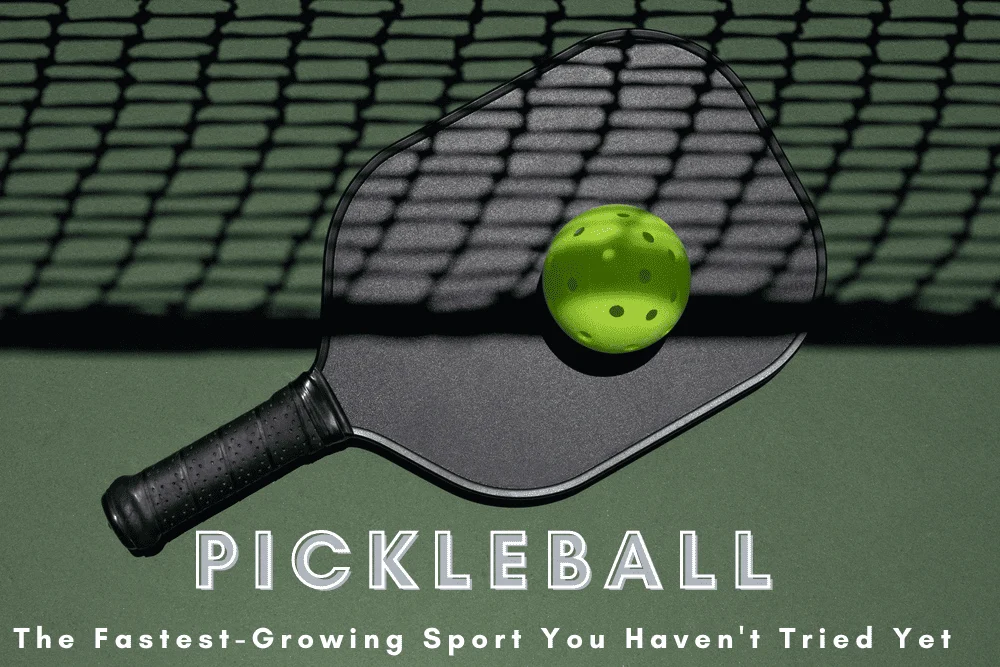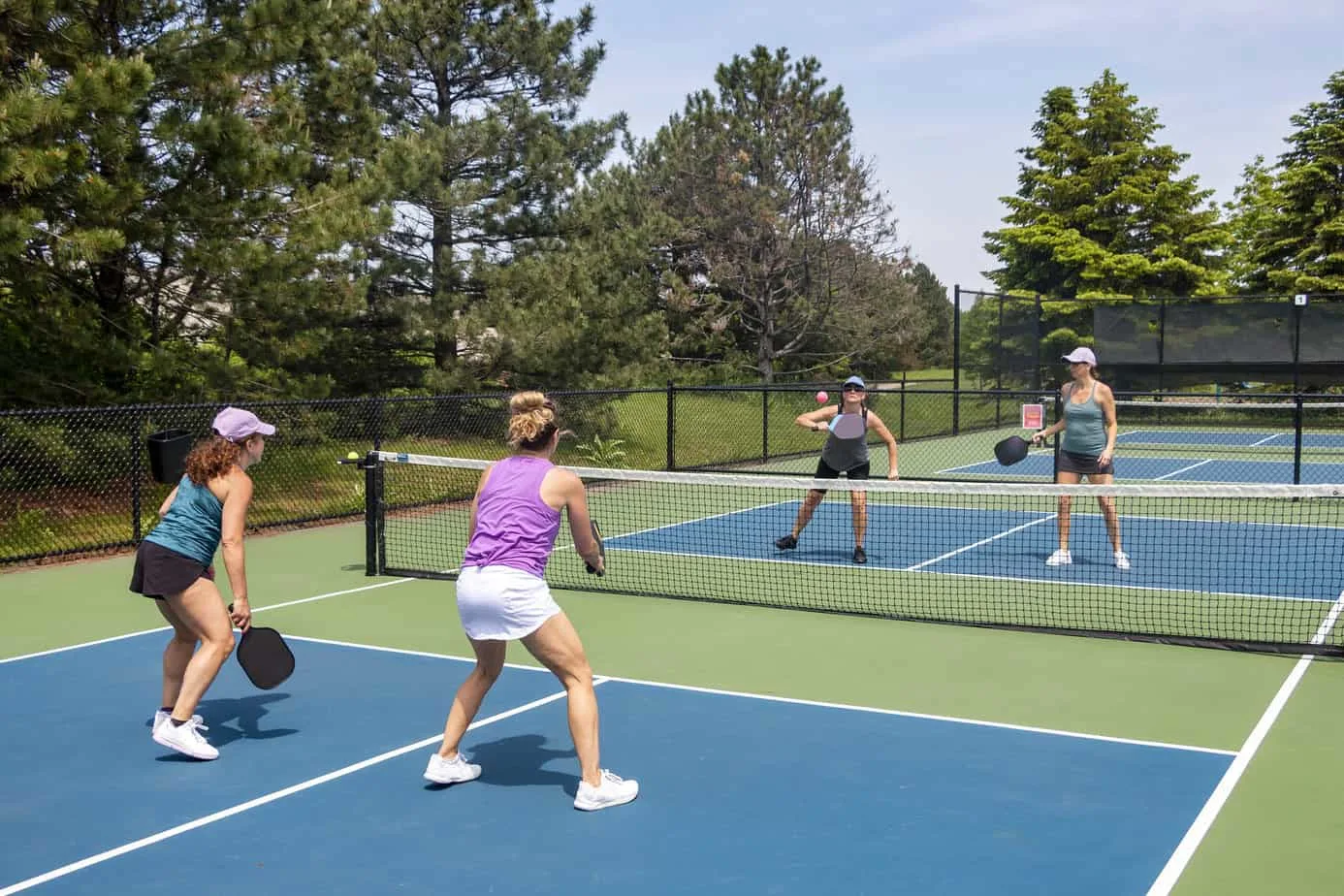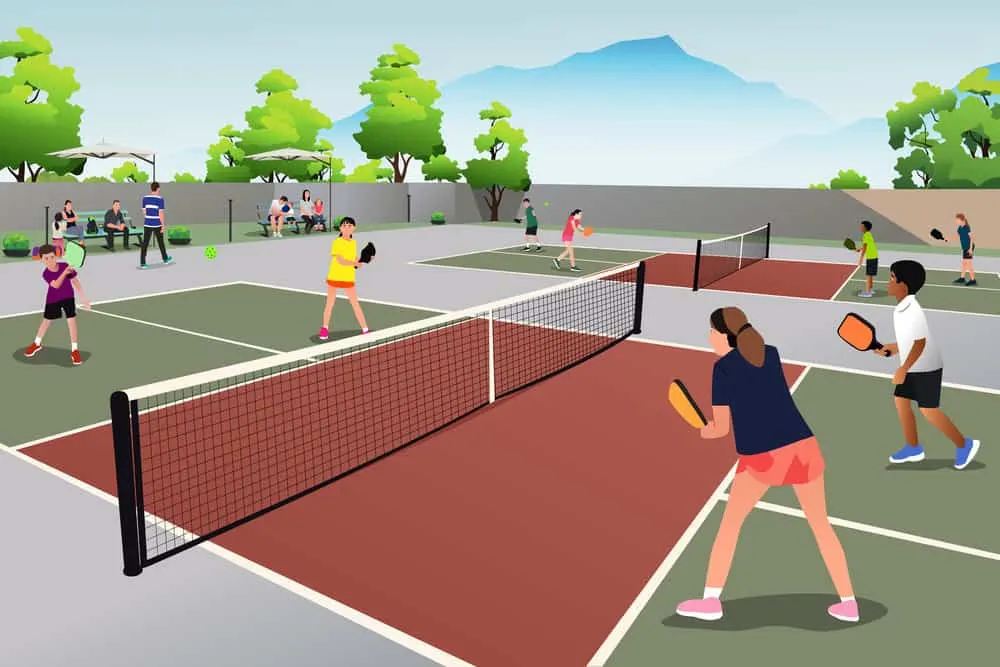Pickleball, a unique fusion of tennis, badminton, and ping-pong, has quickly become one of the biggest sports in the country. In the past few years it has gone from a niche pastime to a mainstream phenomenon.

The sport offers an exciting blend of fast-paced volleying, easy-to-learn rules, and social interaction, making it a game for anyone.
Let's delve into the fascinating world of pickleball, exploring its origins, rules, and the reasons behind its recent meteoric rise in popularity. And who knows, you might find your new favorite pastime to alleviate boredom.
Origins of pickleball
Pickleball originated on Bainbridge Island, Washington, in 1965. The sport was invented by three friends trying to keep their families entertained at a backyard barbecue.
They made up the rules as they went along, lowering a badminton net and making paddles out of wood. As the game evolved, the goal was always to create something that could be enjoyed by people of all ages and skill levels. The result was a game with simple rules that was exciting to play.
Pickleball rules and equipment
Pickleball is played with paddles that are made of wood or composite material. The plastic ball has holes and resembles a whiffle ball, allowing for a good bounce and various shots.
The game can be played indoors or outdoors in either doubles or singles format and is played on a court similar to a tennis court but smaller, requiring less running.
Pickleball has a set of unique rules to encourage long series of volleys for more exciting play. Some include:
- Only underhand serving is allowed.
- Some areas of the court are "no-volley" zones, preventing smashing the ball over the net.
- A double-bounce rule eliminates the advantage of serving and keeps rallies going longer.

Pickleball Action at the Net
Benefits of pickleball
Pickleball offers a low-impact, social, and inexpensive sporting experience for players of all ages and skill levels.
Low-impact sport
Pickleball is a low-impact sport with a low risk of injury, making it an attractive option for people of all ages and fitness levels. The court is small, so there isn't much running, jumping, or pivoting needed to play.
Additionally, some pickleball rules, like the two-bounce rule, slow the game down, keeping the impact low and reducing the risk of injury.
But even though it is low impact, it still provides a fantastic aerobic workout. Running around the court, swinging and hitting the ball all work your entire body and help improve balance and reflexes.
Social benefits
A less obvious benefit is the sense of community and social interaction the game fosters. It is a great way to meet new people and break the ice with friendly competition.
Doubles play requires good teamwork. The solid social component has helped fuel its growth among retirees and older adults looking for an enjoyable way to stay active and make new friends.

Inexpensive sport
Another great benefit of pickleball is the low startup costs. You don't need a country club membership or specialized clothes. All you need are a paddle and some balls, so you can get started for under $100.
Who plays pickleball?
Everyone plays pickleball, from children to teens to seniors. Surveys show the sport is most popular with adults who are 50+. This age group wants to stay active but avoids playing high-impact sports.
Gina Matsoukas loves how the sport has become part of her parents' lives.
"My 70+ year old parents started playing pickleball after retiring and, after much persuasion, got me out onto the court a few times. I will admit it's a fun sport with its fast-paced nature and competitiveness. It's been great to see its rise in popularity, and while it's gaining traction with all ages, I love how it's given the older population something active to participate in."
— Gina Matsoukas, Running to the Kitchen
But pickleball is also a fast-growing sport for youth, as it has become part of many school PE programs and is played in community centers and YMCAs. The sport's simple rules, minimal equipment requirements, and accessible game play make it an attractive option for schools looking for fun PE options for students.
Explosive growth
Pickleball has been growing in popularity since 2014, but growth has exploded in the past few years. It boomed during the pandemic, growing 39 percent during 2020-2021, when people sought fun, easy outdoor activities. And the growth is continuing, with the sport seeing a mind-boggling 85 percent growth in 2022.
Many towns and community centers have started repurposing underutilized tennis courts for pickleball to meet the growing demand. In some areas, it is fueling new businesses.
"It's getting trendy in many areas in younger generations. Austin and Wichita are huge for it, and there are even restaurants that have whole themes around it and include many outdoor and indoor courts!"
— Lara Clevenger, LaraClevenger.com
And the growth is likely to continue, with a solid push to include pickleball in the Olympics. The International Pickleball Federation (IPF) is working on getting pickleball approved as an Olympic sport and is hoping the sport can make become part of the games by 2030,
Embrace the pickleball phenomenon
Pickleball's incredible growth in recent years is due to the sport's unique combination of accessibility, exciting gameplay and social interaction. With its simple yet engaging rules, low-impact nature and adaptability to players of all ages and skill levels, pickleball is a sport everyone should try.
Whether you're a seasoned athlete looking for a new challenge or simply seeking an active way to connect with others, pickleball offers an exhilarating experience. So discover for yourself why pickleball is so popular and become part of a vibrant community that continues to grow and thrive.
Anne Jolly is the creator of the food blog Upstate Ramblings. She loves to cook with gadgets like an air fryer, sous vide or pressure cooker. In her free time she enjoys hiking, reading, knitting and spending time with her three kids.
This article originally appeared on Food Drink Life.
